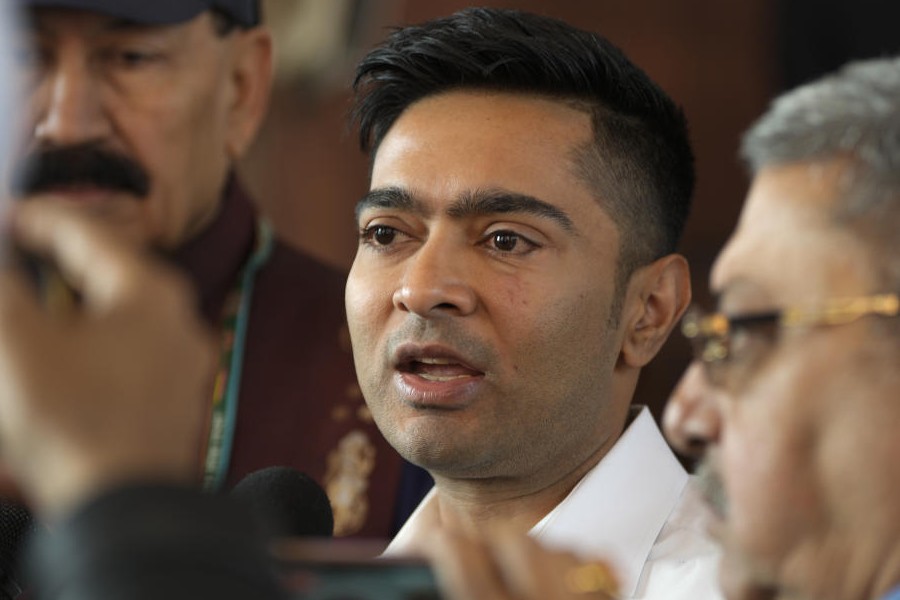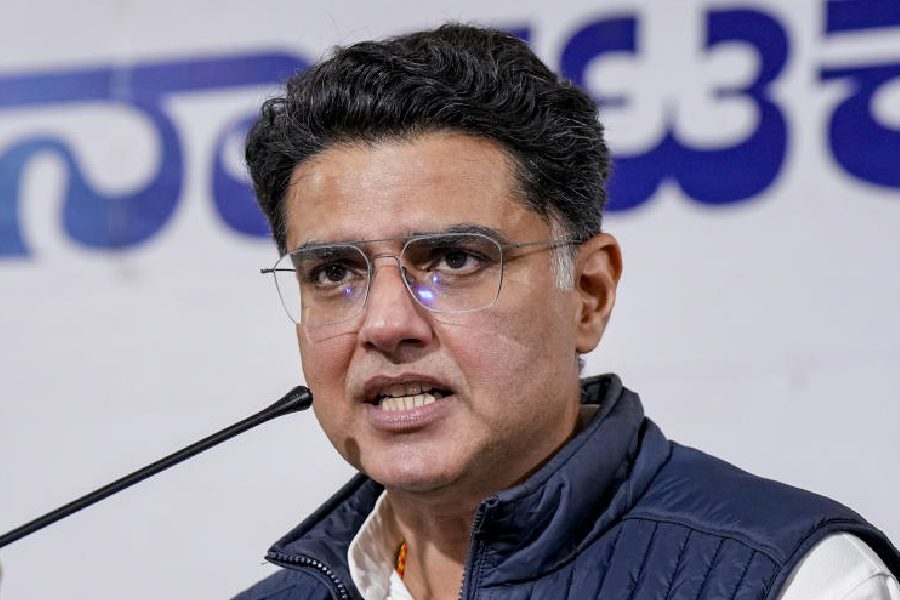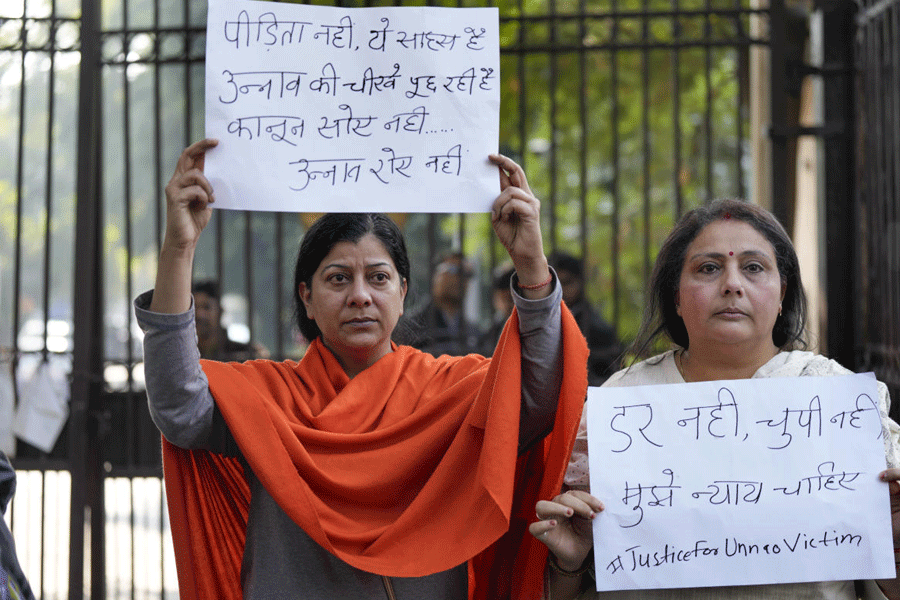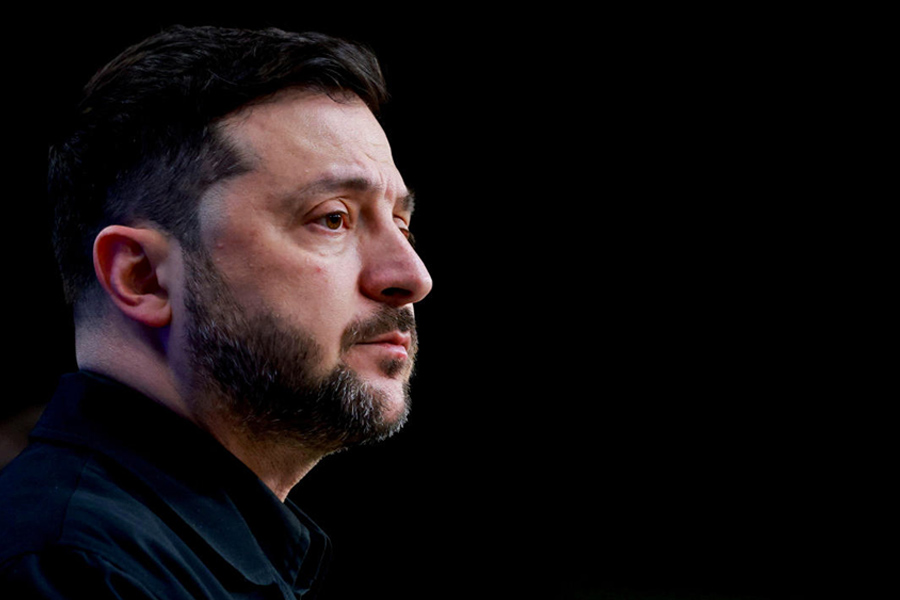 |
| THE EAT IS ON: (Clockwise from top left) Food show hosts Nigella Lawson, Vicky Ratnani, Bobby Chinn and Ritu Dalmia |
Deb Ganapathy, 10, is hooked to Masterchef Australia. He and his older brother Dhruva, 16, have avidly followed the last two seasons of the blockbuster food reality show. “Oh, they were completely addicted to it,” laughs their mother Maitreyee Saha Ganapathy. “They knew which chef cooked what, they knew the participants, who’s in, who’s out. And they’d be really upset if they had to miss an episode for some reason.”
Art historian and writer Ella Datta, 70, is another diehard cookery show fan. A foodie and an enthusiastic cook, she has watched virtually every food show on lifestyle channels like TLC and NDTV Good Times — though she does have her favourites. “There is of course a voyeuristic pleasure involved in watching food shows. But I like cooking and I’m basically looking for recipes from these shows,” says Datta.
 |
Datta and the Ganapathy boys are among the legions of Indians — young and old, male and female — tuning in to the explosion of food and cookery shows on television today. It’s a veritable gastronomic carnival out there, and it’s pushing the horizon of your food experience — telling you not just about the perfect pindi channa, but about exotic cuisines and dishes around the world.
The shows are as varied as the jaw-dropping variety of luscious food they summon up. Some hosts are foreign and iconic, some are home grown stars; some shows have a travel-and-food format, some have the traditional, behind-the-counter model; and some, like Masterchef Australia or Top Chef, are reality shows that blend the thrill of a contest into the visual feast of sumptuous dishes being made from scratch.
And it’s not just the old favourites who are ruling the roost. The ever popular and oh-so-oomphy Nigella Lawson, who’s done more to sex up food than anyone else (Nigella Bites, TLC) or the drop-dead dishy Anthony Bourdain (No Reservations, TLC), are now rubbing shoulders with the likes of Vicky Ratnani (Vicky Goes Veg, Vicky Goes Foreign, NDTV Good Times) Vineet Bhatia (Twist of Taste, Fox Traveller) or Aditya Bal (Chakh Le India, NDTV Good Times), to name just a few.
 |
 |
That’s a far cry from the 1990s when the only hit food show on television was chef Sanjeev Kapoor’s Khana Khazana, which was launched on Zee TV in 1993 and had an uninterrupted 17-year run. Kapoor too recognised the phenomenal rise in the Indian audience’s appetite for food shows and in 2011 launched his own 24-hour food channel called Food Food.
So why is Indian television so spectacularly awash with food shows today — and what’s prompted the interest in them?
“It’s just a reflection of a changing India,” says Ritu Dalmia, chef and owner of the Diva group of restaurants in Delhi and one who has done two food shows on NDTV Good Times — Italian Khana and Travelling Diva.
“Indians were always interested in food. We are a very food-centric culture. What’s happened now is that the interest has become much wider. People have become aware that food is not necessarily what we eat at home and they want to know about it all,” says Dalmia, who has a new season of Travelling Diva set to be telecast soon.
Chefs and those in the food business feel that a number of factors have contributed to this gastronomic glasnost. Urban families have a lot more disposable income today, they travel abroad and are exposed to world cuisine. They eat out much more too. The Moti Mahal brand of butter chicken may still have its following, but thanks to the rash of Thai, Japanese, Korean, Italian, French, Greek, Mediterranean restaurants in the metros, more and more Indians are tucking into stuff like sushi and steak tartare, ravioli and roast duck confit, mezze and miso soup. The caramel custard’s been swapped for a crème brulée, and perhaps the chocolate mousse for a lemon meringue with limoncello sorbet.
 |
 |
| Sabyasachi Gorai and (top) Aditya Bal |
“Rara Avis, a French restaurant in Delhi, serves escargots and rabbit. I am told that it’s chiefly the Indian clientele who are falling over themselves to eat all this,” says Sonny Walia, who runs Gourmet Planet, a Facebook group of food lovers, that has nearly 6,000 members.
Indeed, becoming a connoisseur of food — and food of the world — is now a lifestyle statement for the aspirational urban Indian, akin to owning a state-of-the-art kitchen or a bar that sports fine wines and single malts.
What’s clear is that the plethora of food shows on television both feed the trend and feed off it. Arun Kumar, cuisine and brand head of the Delhi-based Zambar group of restaurants that specialises in coastal and southern Indian food, puts it well: “Food shows and the information they offer, the restaurants serving exotic cuisines, and people’s desire to try different kinds of food at home and outside — all these things complement each other.”
Another factor that has led to the popularity of these shows is that many of the gorgeous dishes that you see being whipped up no longer look like pure fantasy. “All sorts of gourmet ingredients are available in the Indian market now, so you know that you can go ahead and replicate the dishes,” says Vicky Ratnani, chef and ebullient host of Vicky Goes Veg and Vicky Goes Foreign- Canada Tadka.
Ratnani has a point. Forget those years when you struggled to find Arborio rice to make an authentic risotto. Or had to substitute Parmesan with Amul cheese. Today it’s all out there — the finest cheeses, truffles, Spanish piquillo peppers, Miso paste, dried seaweed, shitake mushrooms… you name it, and no matter how esoteric, it’s probably available at your supermarket.
So if you see Bobby Chinn (World Café Asia) do a fiery Szechuan Kong Pow Chicken or Rachel Allen (Bake!) confect a delectable ricotta cheesecake, likely as not, you’ll be able to access the ingredients to turn out the dish in your own kitchen.
And if you thought it’s only women who are picking up cooking tips from these shows, think again. While no firm data is available on this, experts say men watch food shows as much, or maybe more, than women do. “Our food shows cut across segments, age and geographies,” reveals a source at NDTV Good Times.
Bikramjit Ray, who has hosted food shows like Secret Kitchen that ran on CNN IBN for six years and more recently, Fat Man and 13 Brides on NDTV Good Times, has his own take on this socio-culinary rejig.
“For today’s women, the kitchen is purgatory. It’s a punishment. The men, on the other hand, were never under pressure to go into the kitchen. So they love to watch these shows, both for viewing pleasure and for practical cooking advice with which they can experiment.”
Ray recounts how he was once accosted by two young male students at Delhi’s India Gate. They recognised him from his TV show and wanted to know the finer points of cooking certain dishes.
Before the food revolution truly got underway, television networks realised that the country had a captive audience for food and lifestyle shows. Interestingly, India was the first country where Discovery launched its Travel and Living channel in 2004. “Market studies revealed at the time that India was more than ready for a lifestyle channel,” says Rajiv Bakshi, vice-president, marketing, South Asia, Discovery Networks Asia-Pacific. “And food is a very important strategic component of a lifestyle channel.” TLC has about 10 to 12 food shows running on Indian television at any given time.
“We were the first ones to show that food programmes were not just about adding dhania and tomato to a dish. TLC really set the benchmark for food shows in India,” Bakshi adds.
So what kind of TRPs do these shows garner? Loath to reveal actual figures, Bakshi says that TRP-wise, it would be unfair to compare them with, say, a soap on Star Plus. “They are very different beasts,” he says. “So compared to a serial, the TRP of even a popular food show may seem low, but in its own segment, the numbers are very healthy.”
Part of the appeal of the current crop of food shows, both foreign and domestic, is that many of them double as travel programmes and give you a glimpse of the culture of the place from where the cuisine or the dish is derived.
It’s a winning formula — combining the romance of travel and the sensuousness of food into one pleasurable bite.
“The genres are a bit grey,” admits Shibani Sharma Khanna, channel director, NDTV Good Times and creative head, NDTV Lifestyle. “Our most popular food shows — Highway on My Plate and Chakh Le India — are, in a sense, also travel shows.”
Aditya Bal, the lanky, backpack toting host of Chakh Le India, too feels the concept works. “Getting a glimpse of the people and culture of a place heightens the experience of a dish being cooked before you.”
Indeed, nearly everyone agrees that the staggering number of food shows on the electronic media, by virtue of their sheer reach, have had a tremendous impact on India’s gastronomic scene. “They’re changing the way people view food,” says chef Sabyasachi Gorai of Olive Bar and Kitchen, Delhi.
Gorai recently won the Best Chef of India award from then President, Pratibha Patil and has done cookery shows for television off and on.“What’s heartening is that they’re also getting a lot of kids interested in becoming chefs. It’s an exciting time to be in the food business,” he says.
Strangely, the one contrarian voice belongs to none other than the man who started it all — Sanjeev Kapoor. Ask him the reason for the popularity of food shows today, and he chuckles, “Sanjeev Kapoor”. But on a more serious note, he says that while they are certainly popular, it would be a gross exaggeration to say that they’ve revolutionised food habits. “People are still rooted to Indian cuisine. It’s more fashionable to talk about foreign cuisine than to actually go out and eat them. And those who do are a minuscule part of the population,” he says.
Perhaps. But in India, even a miniscule part of the population can mean very large numbers. And chef-cum-food show hosts Vicky Ratnani, Ritu Dalmia, Aditya Bal and others say that they get a huge positive response to their shows from Tier-2 cities as well.
“They’re watching these shows and learning from them. There will come a time when people in these towns will also venture into the fine dining experience,” says Ratnani.
That day may not be too far away. And when it comes, food shows on television can truly take a bow.











